Roz Morris's Blog, page 104
November 10, 2011
Imagine Desert Island Discs for novels – welcome to The Undercover Soundtrack… on the red blog
 Imagine a novel could guest on Desert Island Discs. For those of you receiving outside the UK, Desert Island Discs is an immensely popular and long-running show on BBC Radio 4, where guests are asked to choose pieces of music that form a soundtrack to their lives.
Imagine a novel could guest on Desert Island Discs. For those of you receiving outside the UK, Desert Island Discs is an immensely popular and long-running show on BBC Radio 4, where guests are asked to choose pieces of music that form a soundtrack to their lives.
After my recent co-post with Porter Anderson about undercover soundtracks to our novels, I am excited to announce a series…
Starting today, the red blog will be hosting writers who use music in the creation of their novels. I've got scores of them lined up to talk about special pieces that have guided them to a deeper understanding of a character, or helped populate a mysterious place, or clarified a particular, pivotal moment.
First up is Dan Holloway, founder member of the literary fiction collective Year Zero Writers and the literary project eight cuts gallery. His novel The Company of Fellows was voted favourite Oxford novel by readers at Blackwell's. He's talking about Songs From The Other Side of the Wall, and the music that helped him develop his rather individual characters.








November 8, 2011
Put through my paces by Guys Can Read: literary writing, storytelling and the brave new world of indie books
 Today I'm back at Guys Can Read, the weekly podcast books discussion hosted by Luke Navarro and Kevin McGill. Luke and Kevin adore fiction, period. They review everything from Jonathan Franzen to Star Wars novels, with equal expectations of great storytelling, strong characterisation and robust themes. They're not afraid to pick apart what doesn't work, regardless of how hallowed it might be, to venture into genres outside their usual tastes (which are pretty wide anyway) and to celebrate a darn good book even if it's in a genre that's normally sneered at. Kevin's also just released his own rip-roaring fantasy adventure, Nikolas and Company: A Creature Most Foul, now available on Amazon.
Today I'm back at Guys Can Read, the weekly podcast books discussion hosted by Luke Navarro and Kevin McGill. Luke and Kevin adore fiction, period. They review everything from Jonathan Franzen to Star Wars novels, with equal expectations of great storytelling, strong characterisation and robust themes. They're not afraid to pick apart what doesn't work, regardless of how hallowed it might be, to venture into genres outside their usual tastes (which are pretty wide anyway) and to celebrate a darn good book even if it's in a genre that's normally sneered at. Kevin's also just released his own rip-roaring fantasy adventure, Nikolas and Company: A Creature Most Foul, now available on Amazon.
I've been on their show a few times and was thrilled they wanted me along now that I've released My Memories of a Future Life. We started by talking about the novel but soon ventured into wider discussion. We nattered about aspects of literary writing that can get in the way of the story and characters. We talked about indie publishing – as a choice to connect more closely with readers, whether it's risky for writers with an established career, and how readers and writers will in future be setting the publishing agenda just as much as commercial publishers. Oh, and whether I get away with opening my novel with a whinge scene. Come on over.








November 7, 2011
Here be no dragons – fantasy stories in a non-fantasy world
 We've been away for a few days and one of my holiday reads was David Garnett's Lady Into Fox (appropriately enough, as we stayed at an eighteenth-century hunting lodge by the name of Fox Hall). Written in the 1920s, Lady Into Fox is about a man whose wife transforms into a fox shortly after their wedding. They are devotedly in love and determined that this strange change does not matter. He dismisses the servants and shoots the over-excited dogs. She wears clothes, bathes fastidiously and continues to eat her favourite well-bred breakfast of ham and eggs. But her feral nature grows stronger. She forgets to walk on her hind legs and starts to chase ducks – and his struggles to keep her civilised grow more desperate.
We've been away for a few days and one of my holiday reads was David Garnett's Lady Into Fox (appropriately enough, as we stayed at an eighteenth-century hunting lodge by the name of Fox Hall). Written in the 1920s, Lady Into Fox is about a man whose wife transforms into a fox shortly after their wedding. They are devotedly in love and determined that this strange change does not matter. He dismisses the servants and shoots the over-excited dogs. She wears clothes, bathes fastidiously and continues to eat her favourite well-bred breakfast of ham and eggs. But her feral nature grows stronger. She forgets to walk on her hind legs and starts to chase ducks – and his struggles to keep her civilised grow more desperate.
Mention fantasy and most of us assume a story set in a world of mythical beings, dragons, elves, unicorns, vampires, magic-doers and medieval technology. But the fable, fantasy's discreet cousin, is another breed entirely.
In Lady Into Fox, the world and its trappings are normal. There is a hint that the lady's transformation may be a long-buried family trait; her maiden name is Fox and she has russet hair. That's the only attempt at explanation; this happening is what it is. Nothing similar befalls anyone else, either. It seems the act of marriage has put this lady in a peculiar state of animal rebellion.
It reminds me (very obliquely) of Dean Spanley, the film based on Lord Dunsany's novella, in which a clergyman may be the reincarnation of a spaniel. The mood is somewhat lighter and in Dean Spanley, the fabulous happening may be all in the minds of the characters. However, the author is teasing the audience to believe too. There's a whiff of sorcery when a swami gives a lecture on the transmigration of souls. The Dean remarks that cats don't like him. He has a weakness for Tokay, which gives him licence for almost hallucinatory flights of fancy as a young, gambolling spaniel. And finally we go along with the fantasy – because of what it will mean to the characters.
Fantasy doesn't have to take place in a fantasy world.
Thanks for the pic, liz_com1981
While I unpack and catch up on emails chaos, tell me – do you have any favourite unusual fantasy or fable-type stories? Share in the comments!








November 1, 2011
Websites that review indie authors alongside mainstream
 One of the hardest things about being an indie author is getting reviewed in the same places as traditionally published books – especially if what you write is non-genre fiction. Here are a few that came up trumps for me, so I thought if you're in the same boat you might find them helpful.
One of the hardest things about being an indie author is getting reviewed in the same places as traditionally published books – especially if what you write is non-genre fiction. Here are a few that came up trumps for me, so I thought if you're in the same boat you might find them helpful.
Bookviews - to request a review, email acaruba@aol.com
For Books' Sake – email jane@forbookssake.net
RALPH – the Review of Arts, Literature, Philosphy and The Humanities. Go here for their review policy
Also this week I discovered indie author interview site The Bookcast – click here to introduce yourself to them.
If your novel also carries a frisson of supernatural and darkness, you might also snag the attention of Deb at Pen In Her Hand and BJ at Dark Side of the Covers – who also very kindly gave me reviewerly attention.
And if it flirts with SF and fantasy, you might get lucky, as I did, and find yourself evaluated alongside mainstream-published SF and fantasy, both modern and classic, at Critical Mass. (My review is pasted here.)
Thank you, Mrjorgen, for the pic
Have you found any useful review sites? Leave their URLs in the comments!








October 30, 2011
Too much information – be gentlemanly with your research
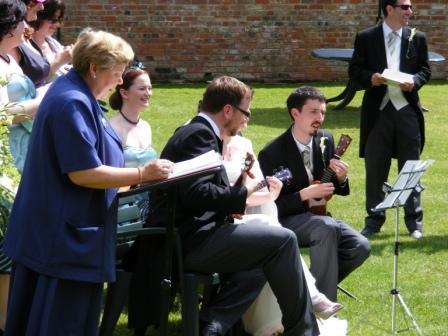
As it's their wedding they can be forgiven
I just read The Fear Index by Robert Harris. Much of the derring-do is in the world of hedge funds. Hedge funds make me feel baffled and not a little cross. Mercifully, Harris is a great storyteller – which means he knows that already.
Instead of baffling us, Harris starts with characters in a situation we can relate to – a man with a mysterious intruder in his house. A good half of the book passes before the reader ever has to grapple with how a hedge fund actually works. When we do it's a terrific scene – a flashback to how the main characters met, so we want to read it. It's full of entertaining characterisation – a racy rogue explains to an introverted scientist that it's like betting on whether the girl at the fridge is wearing black underwear.
If you know about hedge funds, it's charming enough that you forgive it being explained so basically. If you don't, you see a bit of character interaction and emerge smugger and wiser.
Setting overload
So many novels derive much of their atmosphere and story from the setting. Whether it's historical, sci-fi, fantasy, mountaineering, SAS thrillers (or even the world of classical music like My Memories of a Future Life). A lot of the fun of a book like this is the feeling you've had an insider view. But it's easy to overdo the details. Especially if some of your story hinges around something as intricate as how hedge funds work.
I see a lot of novels that judge this wrong. Research-dumps, screeds of stodgy exposition that the writer mistakes for scene-setting. It's clear that the writer has done admirable amounts of legwork – but they then frogmarch the reader through it too.
This not only holds up the story, it puts the reader on the outside while things are explained to them. In fact, you want them on the inside, immersed in the world as though the distinctive details were a natural part of life.
Wear it lightly
Harris clearly understands that however heavily he has to research, the novel should wear it lightly.
His other thrillers tackle ancient Rome (Imperium, Pompeii, Lustrum), the 1940s wartime code-breaking centre Bletchley Park (Enigma) an alternate 1960s (Fatherland) – to name but a few. They are full of intricate world-building – but he translates them into pressures on characters that generate stories. At the same time, you never feel you're struggling to understand, or patronised because he's gone too simple. It's as if when he sat down to write he tried to say as little as possible about what he knew – and put the story and character first.
In your handling of research you have to be like the definition of a gentleman – a man who knows how to play the banjo but refrains from doing so.
Which authors do you think are gentlemanly with research?
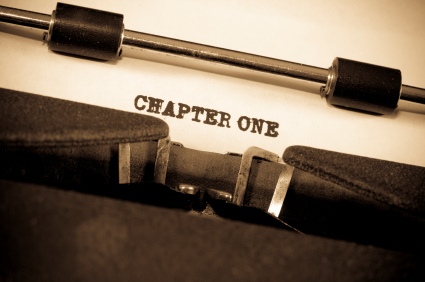 How to write a novel – in-depth webinar series with Joanna Penn of The Creative Penn, starting November. Find more details and sign up here.
How to write a novel – in-depth webinar series with Joanna Penn of The Creative Penn, starting November. Find more details and sign up here.
Nail Your Novel
– my short book about how to write a long o
 ne
– i
s available from Amazon. Not too late to nab a Kindle copy if you're
aiming to be a Wrimo!
ne
– i
s available from Amazon. Not too late to nab a Kindle copy if you're
aiming to be a Wrimo!
My Memories of a Future Life is now available in full. You can also listen to or download a free audio of the first 4 chapters over on the red blog.


 [image error]
[image error]

 [image error]
[image error]
[image error]
[image error]
October 24, 2011
Rejection, stories ripped from real life and writer's block… Hampton Reviews asks the tricky questions
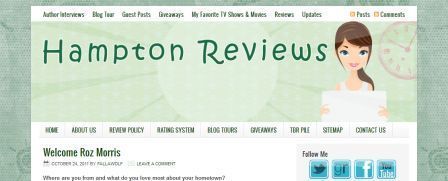 Today I've been given the third degree by Hampton Reviews. From their header they may look fluffy but that sweet smiling girl has a lust for blood, and not the vampire kind. How do I handle rejection? Do I ever use contemporary events or stories ripped from the headlines in my work? What do I find challenging and difficult about writing? What do I do about writer's block? Why do I write, full stop? What advice would I give to writers starting out? And who is my favourite character in My Memories of a Future Life (can anyone guess) … Come over to watch me explain myself.
Today I've been given the third degree by Hampton Reviews. From their header they may look fluffy but that sweet smiling girl has a lust for blood, and not the vampire kind. How do I handle rejection? Do I ever use contemporary events or stories ripped from the headlines in my work? What do I find challenging and difficult about writing? What do I do about writer's block? Why do I write, full stop? What advice would I give to writers starting out? And who is my favourite character in My Memories of a Future Life (can anyone guess) … Come over to watch me explain myself.
 [image error]
[image error]
[image error]
[image error]

 [image error]
[image error]
[image error]
[image error]

October 23, 2011
Should you tie up all the ends when you type 'The End'?
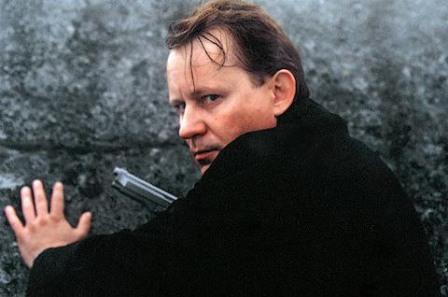 In the Norwegian version of the film Insomnia, one of the characters tells an anecdote that is never finished. It appears inconsequential, perhaps a throwaway line to illuminate character. But good scripts never contain spare remarks, and this interrupted fragment quivers through the rest of the story like a deep note from a cathedral organ.
In the Norwegian version of the film Insomnia, one of the characters tells an anecdote that is never finished. It appears inconsequential, perhaps a throwaway line to illuminate character. But good scripts never contain spare remarks, and this interrupted fragment quivers through the rest of the story like a deep note from a cathedral organ.
It is like the job the characters are doing – investigating a murder and having to create the ending for themselves. It returns later when parts of the story become dreamlike and the main character is tormented by guilt. It is like the everlasting arctic sunlight that won't allow the day to end.
So leaving this anecdote hanging is a rather clever move by the writers.
Closure
Stories need closure – of course they do. We need to feel they ended in the right place. In most genres this does mean tying up all the ends and solving the mysteries. (We've all been infuriated by novels that are deliberately teasing us towards their sequels – The Hunger Games and Twilight. They don't seem to be playing fair.)
In most genres, the fun for the punters is wondering how the murderer will get caught, how the romantic twosome will get together, how the battle was won, how the world was saved (or lost). That's what they're there for.
But if you are writing a story that aims to go deeper than the events, perhaps you don't want to tie everything up or explain everything.
Resonance
Insomnia ties up most of its physical threads – it ends when the case ends. But morally it is anything but neat. The characters leave the story with unfinished business and nagging burdens – and this is its true power. It is the toll paid by those who have to deal with murder. The viewer carries it too, as sharer of this experience in all its ambiguity. (Did ever a post try so hard not to give spoilers?) It plays fair, but it deepens the mystery.
Stories don't always have to give us answers. Sometimes the questions they give us are as important.
Have you got a favourite story that doesn't answer all its questions? Or do you hate it when writers do that? Share examples, good and bad, in the comments!
[image error]How to write a novel – in-depth webinar series with Joanna Penn of The Creative Penn, starting November. Find more details and sign up here.
Nail Your Novel – my short book about how to write a long one – is available from Amazon. Not too late to nab a Kindle copy if you're aiming to be a Wrimo!
[image error]My Memories of a Future Life is now available in full. You can also listen to or download a free audio of the first 4 chapters over on the red blog.

 [image error]
[image error]
 [image error]
[image error]



October 20, 2011
I made you up. Honest. Red-faced guest post at Do Authors Dream of Electric Books
 That dingy, dowdy town in My Memories of a Future Life? Nowhere that really existed was horrid enough so I made it up. I gave it a name that loosely rhymed with 'Hell-on-earth'. And do you know what? A friend has emailed me to say Vellonoweth, give or take an o, really exists.
That dingy, dowdy town in My Memories of a Future Life? Nowhere that really existed was horrid enough so I made it up. I gave it a name that loosely rhymed with 'Hell-on-earth'. And do you know what? A friend has emailed me to say Vellonoweth, give or take an o, really exists.
So today I'm red-faced at Do Authors Dream of Electric Books, grovelling. Do come along and save me from the residents' pitchforks.








October 17, 2011
The undercover soundtrack for your novel – at the red blog
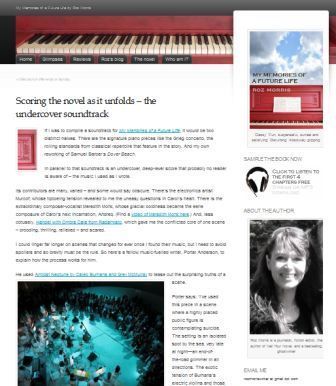 Do you write to music? Many authors do – as background, as a character's favourite or bittersweet tune – or maybe just a way to erase the traffic rumbling by in the street. I've found over the years that the right music can do more than immerse me in a scene – it can also collide with it to actively create unexpected twists and nuances. As though the piece is speaking to the novel at a subconscious level.
Do you write to music? Many authors do – as background, as a character's favourite or bittersweet tune – or maybe just a way to erase the traffic rumbling by in the street. I've found over the years that the right music can do more than immerse me in a scene – it can also collide with it to actively create unexpected twists and nuances. As though the piece is speaking to the novel at a subconscious level.
I call it the undercover soundtrack and I'm talking about it today at the red blog – as it's about music. And also because I got this terrific review for My Memories of a Future Life today so I figured its blog deserved a little attention of its own. Do come over.



 [image error]
[image error]
 [image error]
[image error]

October 16, 2011
Can I trust my agent's advice on my book?
[image error]Is the feedback you're getting for the novel's good or is it steering you to fit in with the market? This writer asked for my advice
I am in the fortunate position of having got (after plenty of rejections, redrafts etc) an agent for the first novel I've written. Which is great. But while the idea of my book is strong, the manuscript needed shaping. With my agent's help, I've been redrafting for the last 15 months, but I'm finding it hard to differentiate between what is solid advice from someone who knows and what are tastes/suggestions that might take my novel away from what I'm trying to do. The suggested changes all ring true in terms of what will make the novel work/sell, it's a much better book, and I know that what's being said is mostly good advice, but I want to keep a tight hold on the heart of why I wrote the novel.
I presume this is something all writers have to go through once they open the door to the world, but I'm hoping you have some tips for gaining clarity and creating the best possible version of a story while not losing anything that's truly integral.
I do sympathise. You've edited the novel for so long you probably can't see where it should go. When someone else is contributing suggestions, you can feel like everything is whirling out of your control. Especially if that person might have different aims from you.
There are two aspects to tackle here.
1. Do you know what you want your novel to be?
You mention you're worried about losing the heart of the book. Yes, absolutely. But it sounds to me as though you may not be entirely sure what that is.
Often if we're writing a novel that's unusual we feel there's nothing else like it. But there are probably a lot of books like it in certain aspects. If you know what those are, it is far easier to have a meaningful conversation with an editor or agent – and it might also help you get clarity yourself. You can think about the novels that may have given you crucial inspiration. Also, look up Amazon tags for the subjects your novel covers – you can find surprising parallels this way
As well as this, work out which of your agent's suggestions are raising your artistic hackles. This is similar to the situation I posted about a few weeks ago, where a writer felt her critique group was derailing her novel. The principles are the same – identify what is working for you and what isn't.
2. Art versus market
Do you fear you're being steered to write something that is more saleable but less artistically fulfilling?
First of all, take a deep breath and ask yourself what you want. I know writers who welcome a lot of direction from their paymasters and are truly happy to fit in with what the market needs. Others decide they have different priorities.
For instance, my novel My Memories of a Future Life was wooed by the senior editor at one of the Big Six, who wanted it to be a murder mystery. Another publisher hinted they would take it if it was reshaped as a conventional thriller. Both urged me to rewrite because their marketing departments would back me after my success as a ghostwriter. But I felt the idea deserved more unusual treatment. My agent liked the novel my way too – and took it out just as it was. But although editors enjoyed reading it, their marketing departments found it too risky.
So agents are not always trying to shoehorn you into a commercial space. And no one can make you change your book or write what you don't want to. (And if you do try to aim more at the market there are no guarantees your book will sell or be successful enough to lead to a career.)
What do you do?
You mention that your agent has been working with you for 15 months. That's a long-haul commitment to helping you nurture the book and shape yourself as a writer. This is a good relationship so far, so make the best of it.
It may be that, as I said above, the agent is unsure what you want and is making stabs in the dark. Give them a chance by begin clear about your vision for the book. Then have a frank discussion about how they are guiding you and where they see you in the market.
Best of luck.
Thanks for the pic jcoterhals on Flickr.
Agree? Disagree? How would you advise a writer in this situation? Share in the comments!
 My Memories of a Future Life is available on Kindle (US and UK) and also in print (and Amazon.com have knocked USD$4 off the price so grab it now). If you're my side of the Atlantic you can now get the print version from Amazon UK and save on postage. You can also listen to or download a free audio of the first 4 chapters over on the red blog.
My Memories of a Future Life is available on Kindle (US and UK) and also in print (and Amazon.com have knocked USD$4 off the price so grab it now). If you're my side of the Atlantic you can now get the print version from Amazon UK and save on postage. You can also listen to or download a free audio of the first 4 chapters over on the red blog.
[image error]


 [image error]
[image error]






